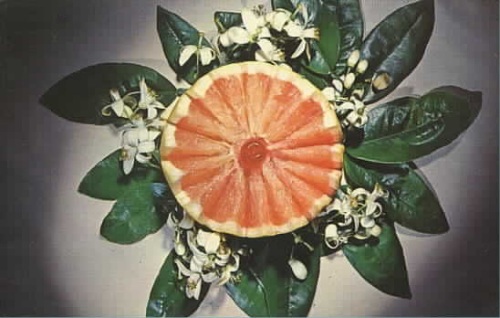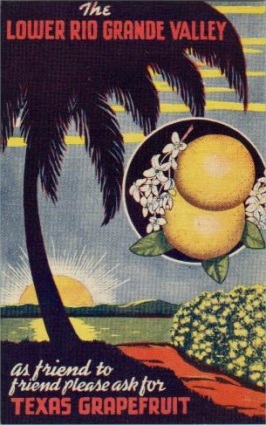|
Contrary
to stereotype, Texas history is more than a land of cowboys,
Comanches, revolution, outlaws
and cattle.
Quite a few Texans, famous and otherwise, tried to make Texas and
the world a tastier place. Here's few original Texas foodies and the
food (and drinks) they bestowed upon the world.
Charles Alderton and Dr Pepper. Charles Alderton, a young pharmacist
at Morrison's Old Corner Drug Store in Waco
(when it was still called Six-Shooter Junction) in 1885, loved the
smells of his soda fountain so much that he started experimenting
with the fruit syrups he served by mixing a little of this with a
little of that to find a potion that tasted as good as his soda fountain
smelled. Once he thought he had it right he shared the new drink with
his boss, who liked it enough to serve it to his customers.
"Shoot me a Waco" customers would say when they ordered one, and they
ordered a lot of them.
Wade Morrison, owner of the soda fountain, hooked up with a beverage
chemist named Robert S. Lazenby to open the Artesian Mfg. & Bottling
Company. According to the Texas State Historical Association they
later changed the name to Dr Pepper (no period after Dr) to honor
Dr. Charles T. Pepper. Dr Pepper made its national and world debut
at the 1904 World's Fair Exposition in St. Louis, along with the hot
dog and ice cream cone. The country's eating and drinking habits would
never be the same.
|
 |
Texas Rio Grande
Valley Grapefruit
Postcard courtesy www.rootsweb.com/ %7Etxpstcrd/ |
John Shary
and Texas grapefruit. The Texas grapefruit industry as we know
it today started in 1929 when a South Texas farmer discovered a red
grapefruit growing on a pink marsh tree, a genetic fluke that Texas
growers quickly turned green by manufacturing red grapefruit exclusively.
Similar mutations were subsequently found in several South Texas groves
in the 1920s and 30s, and each new variety was named for the grower
who found it.
Grapefruit had become a Texas thing in 1910 when John H. Shary, often
called the father of the Texas grapefruit industry, rebuilt the local
irrigation system around Mission
and sold small, irrigated plots to citrus farmers. Today, the Lower
Rio Grande Valley, particularly Hidalgo
and Cameron counties,
produce about seven percent of the nation's grapefruit. The Texas
legislature designated the red grapefruit as the state fruit of Texas
in 1993. Rio Red is the main Texas variety, accounting for about 80
percent of the state's grapefruit production and marketed as Rio Star.
Other varieties are marketed as Ruby-Sweet.
Brad Cowan, Hidalgo
County agriculture extension agent, says that South Texas grapefruit
growers are justifiably proud of their product. "It really is the
world's best grapefruit," he says. "People have an idea that grapefruit
is always bitter, but Texas grapefruit is very sweet" |
 |
The Lower Rio
Grande Valley
Texas Grapefruit
Postcard courtesy www.rootsweb.com/ %7Etxpstcrd/ |
Texas Rio Grande
Valley Citrus Orchard
Postcard courtesy www.rootsweb.com/ %7Etxpstcrd/ |
Charles Doolin
and the Frito. Charles Doolin's father, C. B. Doolin, invented
what might have been the precursor of the steel belt in steel-belted
tires, and he taught his sons how mechanical things work and the importance
of writing patents for anything they invented. Charles extended that
notion to food, even if he didn't invent it.
Long before Doolin ever tried one, fritos were known in Mexico as
the perfect beach food. Fritos translates from Spanish as "fried"
and people called the little corn chips "little fried things." Fritos.
Charles Doolin learned all this when he went looking for a new treat
for the family's confectionary in San Antonio and spied an ad placed
by Gustavo Olguin in the July 10, 1932 edition of the San Antonio
Express. Olguin wanted to sell an original recipe for corn chips,
an adapted potato ricer and 19 retails accounts. Doolin liked the
taste of the corn chips and paid $100 for the whole package.
The family started out making corn chips with the adapted potato ricer
and premade masa (corn dough) that they bought from a tortilla factory.
They named the corn chips Fritos. In September of 1932, two months
after Doolin's deal with Olguin, Doolin chartered the Frito Company.
By 1933, Doolin had a patent for a "hammer press" to mass produce
the chips, and by 1947 the company had five manufacturing plants and
franchises across the country.
Fritos merged with the Lay Potato Chip Company of Georgia in 1961
to form the Frito Lay Company, which became a subsidiary of PepsiCo
in 1965. In May of this year, Forbes Magazine listed Frito-Lay as
the world's 40th most valuable brand, with an estimated brand value
of $13.6 billion. The company's headquarters are in Plano.
|
| T.C. Nye,
George Copp and the Texas Onion. If Texas weren't already so well
known for commodities like cows, cotton and corn, we might be known
instead for our onions, the state's number one vegetable crop. The
sweet yellow Bermuda onions that connoisseurs like to say "you can
eat like an apple" originated here by way of the Canary Islands. |
"Packing
Bermuda Onions - Texas Gulf Coast Country
Reached by Rock-Island Frisco Lines"
Postcard courtesy www.rootsweb.com/ %7Etxpstcrd/ |
Consumers who
buy onions at the grocery store, especially early in the year, are
probably buying a Texas onion. Onion sales bring between $70 million
and $100 million to the state every year with an overall economic
impact of about $350 million, according to figures from Texas A&M
University. It all started with a single packet of Bermuda onion seeds
that T.C. Nye and George Copp planted near Cotulla
in 1898. They sent the onions from that seed to Milwaukee, which may
have been the first commercial shipment of onions anywhere in the
country.
Wisconsin responded to that first shipment with a simple plea: "Send
more onions!"
Nye reportedly made a previously unheard of $1,000 an acre on his
crops. By 1907, Texas was shipping more than a thousand railroad cars
of onions a year. That number more than doubled the next year. But
onions have not always been a sure thing in Texas.
Low prices drove a lot of the early growers out of business by the
time World War I started,
but the war actually gave the onion industry a much-needed boost by
creating food shortages in Europe, which Texas onions helped battle.
By the 1920s, almost inevitably, the market slumped because of falling
prices and overproduction.
During that same time, Bermuda onions seeds were becoming scare because
of high demand. The Texas farmers were planting more seeds than the
island of Tenerife in the Canary Islands, the principal producer,
could ship. In a frantic race to keep up with demand, seed quality
declined.
The first Grano onions were brought here from Spain in 1925 in response
to the seed crisis. In 1933 the Texas Agriculture Experiment Station
launched an onion breeding program that led to the development of
the Texas Grano 502, the mother of all the sweet onions in the world
today. Adapted to short days and moderately cool temperatures, they
thrive in the Rio Grande Valley and Winter Garden areas of the state.
One of the most popular varieties is the Texas 1015Y variety. The
numbers tell the growers when to plant - on October 15 - and the Y
refers to the yellow color. Transplants are harvested in September
for shipment in December to the Southern U.S. and through April for
the northern markets, including Canada.
Consumers across the country are still asking Texas to "send more
onions." |
|
|
